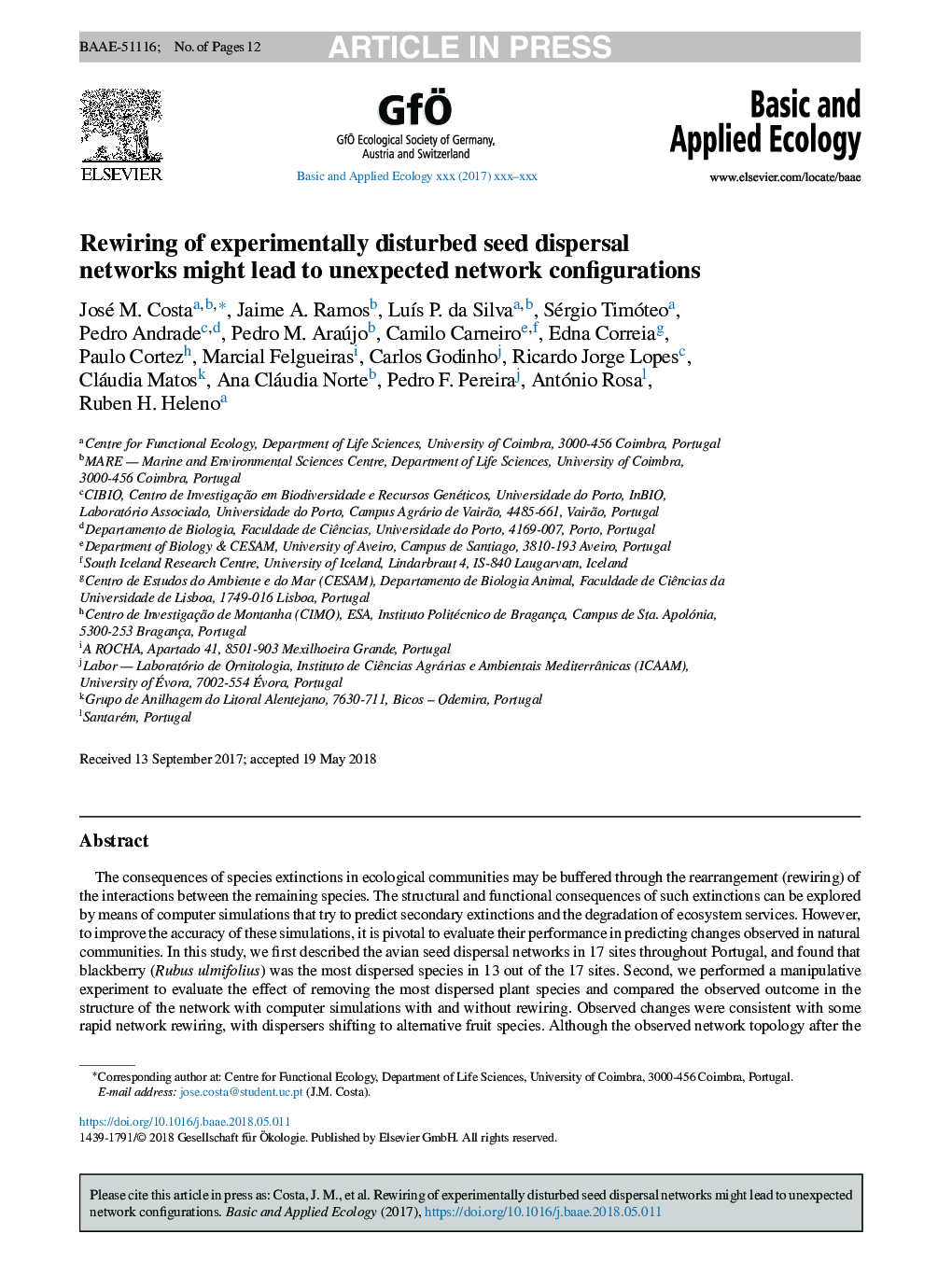| Article ID | Journal | Published Year | Pages | File Type |
|---|---|---|---|---|
| 8846969 | Basic and Applied Ecology | 2018 | 12 Pages |
Abstract
The consequences of species extinctions in ecological communities may be buffered through the rearrangement (rewiring) of the interactions between the remaining species. The structural and functional consequences of such extinctions can be explored by means of computer simulations that try to predict secondary extinctions and the degradation of ecosystem services. However, to improve the accuracy of these simulations, it is pivotal to evaluate their performance in predicting changes observed in natural communities. In this study, we first described the avian seed dispersal networks in 17 sites throughout Portugal, and found that blackberry (Rubus ulmifolius) was the most dispersed species in 13 out of the 17 sites. Second, we performed a manipulative experiment to evaluate the effect of removing the most dispersed plant species and compared the observed outcome in the structure of the network with computer simulations with and without rewiring. Observed changes were consistent with some rapid network rewiring, with dispersers shifting to alternative fruit species. Although the observed network topology after the experimental removal was not accurately predicted, the extinction simulation with rewiring performed considerably better than that without rewiring. Individual species roles were even harder to predict than emergent network properties on both types of models. We show that incorporating rewiring rules can considerably increase the accuracy of species extinction models, however, the functional consequences of losing important resources might not be easily anticipated, and rewiring might occur in unexpected directions.
Related Topics
Life Sciences
Agricultural and Biological Sciences
Animal Science and Zoology
Authors
José M. Costa, Jaime A. Ramos, LuÃs P. da Silva, Sérgio Timóteo, Pedro Andrade, Pedro M. Araújo, Camilo Carneiro, Edna Correia, Paulo Cortez, Marcial Felgueiras, Carlos Godinho, Ricardo Jorge Lopes, Cláudia Matos, Ana Cláudia Norte,
